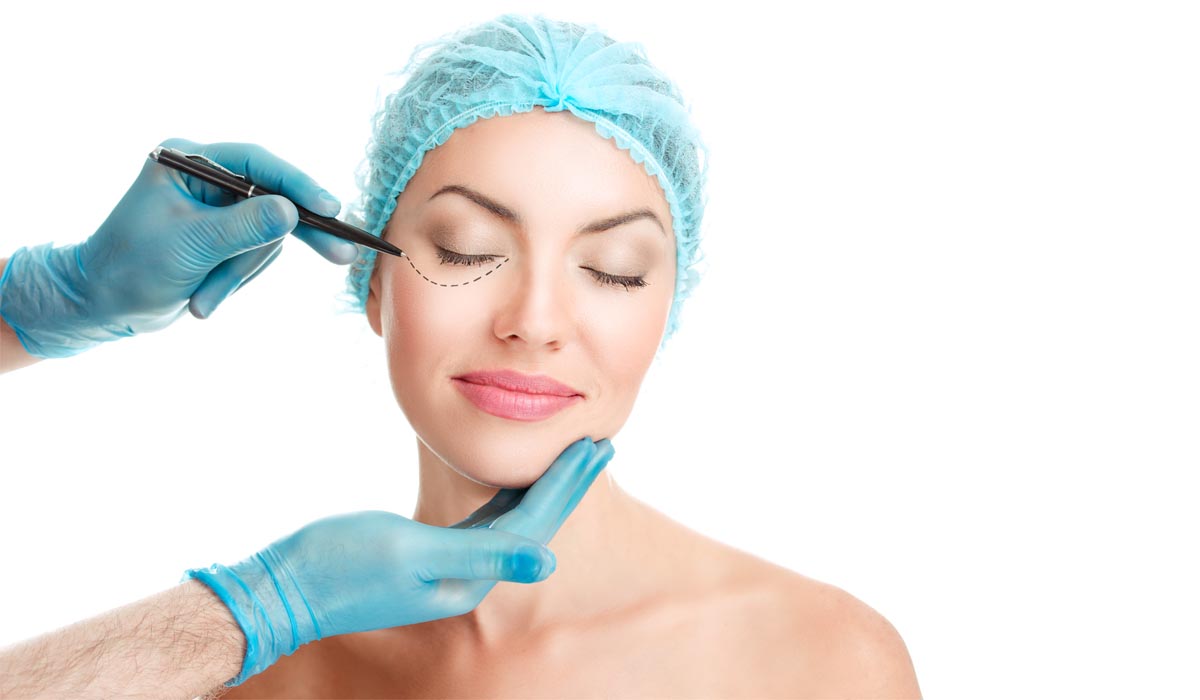✨Book online and enjoy a 5% discount on your first consultation
Home » Plastic Surgery Services » Blepharoplasty


Blepharoplasty (upper & lower)
Blepharoplasty is a surgical procedure that fixes saggy eyelids by eliminating extra skin, fat, and muscle. During the course of aging, your eyelids sag, and the muscles that sustain them become weaker. The consequence is bags under your eyes, drooping eyebrows, and saggy upper lids caused by excess fat accumulating along each eyelid. Apart from making you look older, sagging eyelids can limit your peripheral vision. Particularly in the top and outer regions of your range of view. In medical aesthetics, non-surgical blepharoplasty is a term that encompasses a wide range of non-surgical forms of treatment.
Possible Causes
Eyelid surgery is most popular among people who are seeking anti-aging treatments. As we get older, the skin around our eyes begins to wrinkle and sag. However, if you find this unpleasant, you may want to consider a procedure like this. Blepharoplasty is also sought after by those with sagging eyebrows and bags beneath the eyes. It may be performed for reasons other than cosmetics for some people. If sagging skin is interfering with your eyesight, you may be a contender for this treatment. Some people may claim that the sagging skin obstructs their view when glancing upwards.
Risk Factors
Possible risk factors associated with eyelid surgery are:
The risk associated is general. Always choose a trained and experienced cosmetic surgeon in Dubai to mitigate the risk factors.
Sign & Symptoms
You may require blepharoplasty when you have:
Diagnosis
You must first meet with our plastic surgeon to explore your issues and intended outcomes for your eyelids. Several tests are required by our surgeon before this surgery is performed on you. Your eyes are examined and measured during a physical exam. Sight and abrasion checks are also carried out.
Treatment Options at 7DMC
7DMC Plastic Surgery is focused on ensuring that you receive the best and safest care possible. Our highly qualified and professional team guides you through the entire blepharoplasty procedure in a smooth and comfortable manner, allowing you to make the right decision.
Before scheduling your surgery, our doctors describe to you the treatment, procedure, recovery time, and possible side effects. You must share your medical history with the doctor and your expectation from the surgery.
In certain cases, general anesthesia may be required. A numbing chemical is frequently injected into your eyelids by the surgeon. First, the top eyelids are treated. As a result of this procedure, our surgeon creates a small incision to remove extra skin along with some fat and muscle. After the incision is closed, our surgeon may relocate some of these tissues to different places around the eye.
Lower lid blepharoplasty usually includes extracting fat, which leads to under-eye bags and often a small bit of skin removal. Depending on the eyelid type, the cut can be made either inside or outside the lower eyelids. The lower eyelid can be constructed or attached to the bony skeleton in some individuals.
Comparatively, the recovery time for blepharoplasty is short. Unless there are issues, you’ll be sent home the same day if there are no adverse effects. Shortly following eyelid surgery, it’s crucial to take it easy for a few days. Swelling and discomfort are possible side effects of the treatment. Be sure to wash the skin softly and maintain it clean as well. Once you’ve recovered after a few days, you must visit the surgeon again for an assessment and have any stitches removed, if necessary.
It’s critical to inform our surgeon about any medicines you’re taking, whether prescription medications, over-the-counter medications, or any herbal supplements. You are advised to stop taking any medicines that boost your risk of bleeding (blood thinners). For several weeks before your blepharoplasty, you’ll also have to give up smoking for health reasons.
The effects of blepharoplasty are long-lasting. You are unlikely to need follow-up procedures. The effects on the upper lid may last anywhere between 5-7 years and for the lower lid for more than 20 years.
Near Dubai Miracle Garden,
Diamond Business centre A,
1st Floor,
Arjan, AI Barsha,
Dubai.
Career@7DMC | Privacy Policy | Patient Data
WhatsApp us